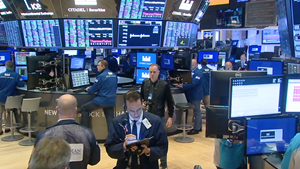Strengthening U.S. dollar slows oil price rally
(Bloomberg) - Oil fell the most in a week as the dollar strengthened and investors shrugged off an attack on the world’s largest crude terminal in Saudi Arabia.
Global benchmark Brent futures slid 1.6% on Monday after earlier surging above $71 a barrel. The Bloomberg Dollar Spot Index rose as much as 0.5% on Monday, reducing the appeal of commodities priced in the currency. Meanwhile, the market looked past an assault on a storage tank farm at the Ras Tanura terminal on Sunday, with Saudi Arabia saying the attack was intercepted and oil output appeared to be unaffected.
“There was a big ripper this morning, but the fundamentals that got it there evaporated in the face of a successful defense,” said Bob Yawger, head of the futures division at Mizuho Securities.
Oil has surged more than 30% this year as OPEC+ keeps a lid on production and demand is seen recovering with economies emerging from the coronavirus crisis. Forward oil prices point toward further strength, with the Brent strip for 2022 near the highest since July 2019.
Production and export capabilities following the attack in Saudi Arabia “came out relatively unscathed, so the market has taken that as a cue for some profit-taking,” said Tony Headrick, energy commodity broker at CHS Hedging. “But underlying it all is a fundamental setup that is supportive. Global crude and product inventories continue to drain down, encouraged as of late by the recent OPEC+ decision.”
Meanwhile, the U.S. market continued to recover from the effects of the deep freeze that hit Texas and other parts of the country last month. Seven of 18 refineries that were affected by the cold blast -- representing over 2 million barrels a day of crude processing capacity -- were operating normally as of Monday. Physical oil prices in the U.S. have rebounded, with Mars Blend trading this month at the largest premium to Nymex oil futures in nearly three weeks.
Prices:
- Brent for May settlement declined $1.12 to end the session at $68.24 a barrel
- West Texas Intermediate for April delivery fell $1.04 to settle at $65.05 a barrel
The global benchmark crude’s rally north of $70 earlier Monday may cause a headache for Asian refiners, which are warning that the rapid surge and spike in volatility will hurt demand and whittle away still-tight processing margins. Saudi Arabia has also boosted its official selling prices to buyers in the region for April.
Mideast Tensions
Saudi Arabia said the Ras Tanura site on the country’s Gulf coast was targeted by a drone from the sea. The terminal is capable of exporting about 6.5 million barrels a day -- almost 7% of demand -- and, as such, is one of the world’s most protected facilities. It’s the most serious attack on Saudi oil installations since a key processing facility and two oil fields came under fire in September 2019.
The assault follows a recent escalation of hostilities in the Middle East region after Yemen’s Houthi rebels launched a series of attacks on Saudi Arabia. The new U.S. administration also carried out airstrikes in Syria last month on sites it said were connected with Iran-backed groups.
Other oil-market news:
- Oil’s surge following OPEC+’s surprise move to maintain cuts in supply shows the producers’ group is in charge of the market, Vitol Group said.
- A flood of fuel exports from Asian suppliers is driving an unusual post-Lunar New Year surge in shipping activity, boosting tanker rates on one key route in the region from the lowest level in almost nine years.
- The S&P Global Platts proposal to make Dated Brent a CIF benchmark would undermine the current pillars of the Brent crude market and replace them with something new, Oxford Institute for Energy Studies senior research fellow Adi Imsirovic wrote in a report.



